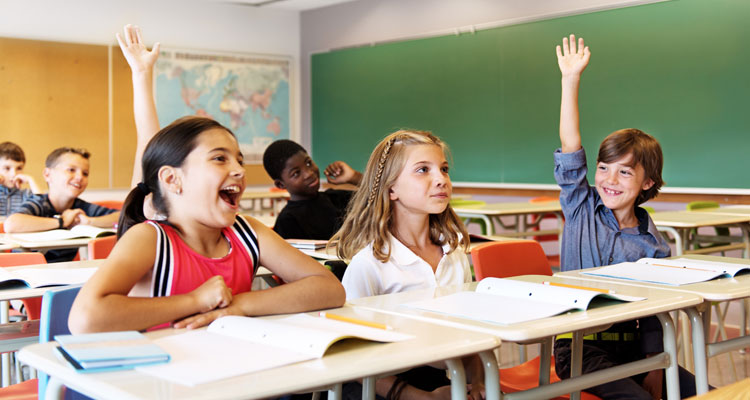You’re probably at least somewhat familiar with the concept of inclusion in schools—allowing students with disabilities who require a form of special education to participate in and learn alongside their non-disabled peers in traditional classrooms. Reverse inclusion is the opposite. It provides opportunities for typically developing students to spend time participating in special-education classes.
Case Study: A Look at a Reverse Inclusion Program
One researcher at California State University, Linda Baker Kaempfer, wrote her master’s thesis on the topic of reverse inclusion. She observed and evaluated one elementary school’s reverse-inclusion program, which involved 25 typically developing third-graders from one classroom and seven students with moderate to severe disabilities from a special-education classroom.
The goal of the program was to encourage social engagement between both groups of students in and outside the classroom and for all to learn from each other. This particular reverse-inclusion program lasted for five weeks, nd included two 30- to 45-minute classroom sessions per day (at 11 AM and 1 PM). During the reverse inclusion sessions, the special-education teacher conducted interactive lessons in level-appropriate math, phonics, art, physical education, and science while two different students from the general-education classroom attended and participated in each session.
A Win–Win
Kaempfer surveyed teachers and students and conducted focus groups before and after the five-week program. After evaluating the feedback, she concluded the program was beneficial to both sets of students. She made the following observations:
- Scheduled, structured contact between typically developing and special-education students fosters positive relationships in the classroom, on the playground, and beyond.
- Reverse inclusion provides a positive environment for the modeling of age-appropriate behaviors.
- Typically developing peers gain empathy by interacting with students with differences.
While clearly beneficial, reverse inclusion is not without its challenges. The teacher will need to make sure that lessons and activities during the inclusionary period are interesting to both groups of students and structured to encourage communication and two-way participation. Ideally, students will work together rather than having the typical student serve as the leader and the disabled student the follower. Additionally, some students with disabilities have difficulty communicating, which may frustrate both sets of students.
In some schools with reverse inclusion programs, general education teachers aren’t willing to allow their students to miss academic time in order to participate. As an alternative, some schools’ reverse inclusion programs are scheduled for recess and free-choice periods. A special education teacher in one such school noted, “the fear that students might not want to miss their recess or free time was unfounded … the students wanted to participate in every opportunity they were offered.”
Reverse Inclusion vs. Inclusion
It’s clear that general and special education students can both benefit from interacting in a supervised and structured setting—which both inclusion and reverse inclusion facilitate. Reverse inclusion is often a better approach for students who have medical needs, communication difficulties, or who sometimes exhibit violent behavior. It’s also a great option for schools that lack the resources to allocate a one-to-one aide needed for inclusion in a typical classroom.
As a parent, how would you feel about your typically developing student volunteering to spend time in a special-education class assisting and getting to know those students? What would you hope they would gain from the experience? If you have first-hand experience with reverse inclusion, we would love to hear your story!





































